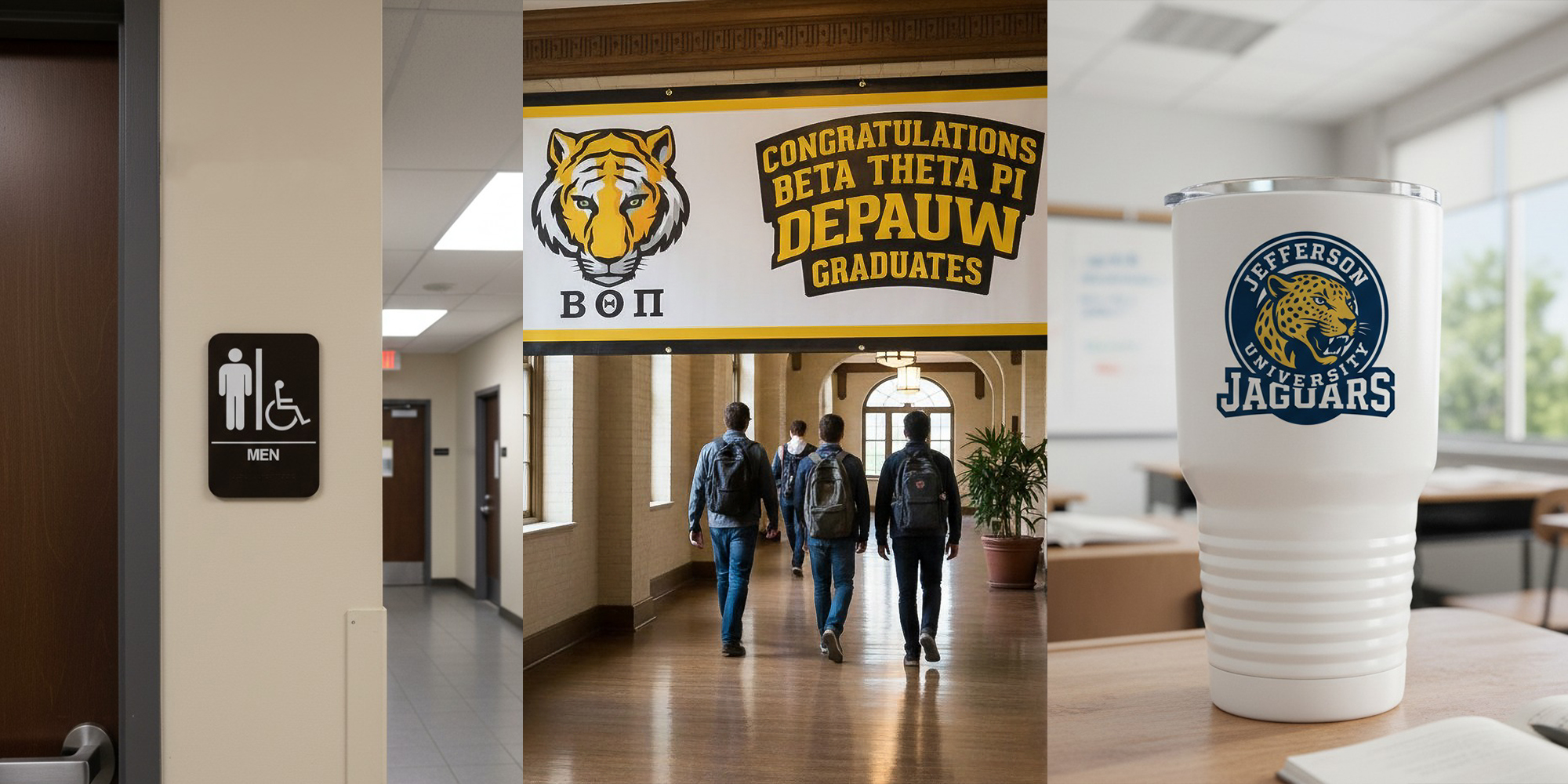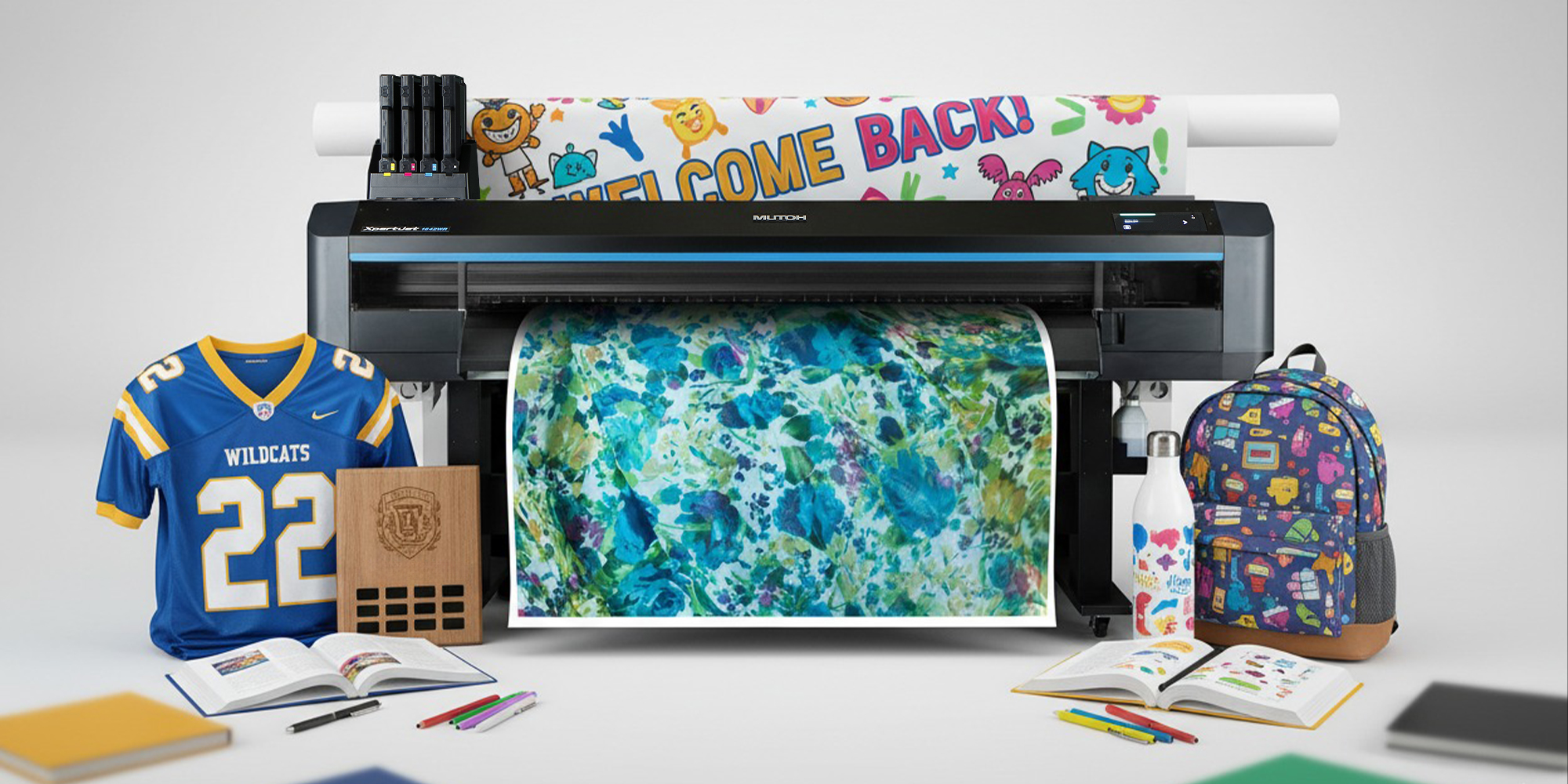Printing ADA-Compliant Braille Like an Expert
When it comes to signage, accessibility is about more than checking boxes on a compliance list; it’s about creating spaces where everyone can navigate with confidence. Now, thanks to the versatility of the UV-LED printer, producing ADA-compliant printed braille signage is more accessible, cost-effective, and efficient than ever before. For print shops and organizations alike, the challenge has always been striking a balance between precision and efficiency.

This guide explores the essentials of ADA braille signage, why digital printing is revolutionizing the industry, and how real-world businesses are saving money and gaining new opportunities by mastering ADA compliance.
Why ADA Signage Matters
The Americans with Disabilities Act (ADA) has been in place for over three decades, establishing standards to ensure that public spaces are accessible to all. From hospitals and schools to office buildings and apartments, ADA signage plays a critical role in guiding people safely and independently.
Not all signage requires braille, but for permanent room identifiers, such as restrooms, stairwells, or electrical rooms, tactile lettering and braille are mandatory. Informational and wayfinding signs, on the other hand, must still meet rules around contrast, finish, and readability. Knowing these differences helps print providers determine when braille printing is necessary and when other methods will suffice.
ADA signage isn’t just about compliance. It’s about building trust and ensuring inclusivity in every environment.
Understanding the Standards
Producing custom braille signs isn’t something you can guess your way through. The ADA specifies exact rules for braille dot shape, height, spacing, and tactile lettering, all designed to ensure readability through touch. Even small variations can render a sign non-compliant and risking large fines.
Instead of memorizing measurements, the best practice is to use certified ADA braille fonts, measure output with calipers or gauges, and always double-check work against official guidelines. The U.S. Department of Justice provides the full 2010 ADA Standards for Accessible Design, which should be the go-to reference for any shop taking on ADA signage projects.
Why Use a UV Flatbed Printer for ADA Braille
Traditionally, ADA signage was made using photopolymer processes, thermoforming, or inserting tiny raster beads into drilled holes. These methods work, but they’re time-consuming, rigid, and limit design flexibility.
This is where digital technology shines. Modern solutions, such as the MUTOH XpertJet 661UF and the larger XpertJet 1462UF printers, enable you to print compliant tactile lettering and ADA braille dots directly onto substrates with precision layering of clear varnish or white ink. The XpertJet 1462UF even offers a CMYK+Braille single-pass capability, allowing you to produce compliant signage that combines text, graphics, and braille in one efficient run. Imagine creating a full ADA-compliant restroom sign with tactile text, braille, and full-color branding without multiple production steps. That’s the kind of efficiency today’s UV technology delivers.
For shops looking to add ADA signage to their offerings, MUTOH ’s award-winning printers paired with the award-winning VerteLith™ RIP software provide a streamlined workflow that simplifies layering and braille file setup. With easy-to-follow braille tools built into the RIP, plus the accuracy of multi-pass control, you can transition from everyday signage to ADA-compliant braille production seamlessly. These UV flatbed printers create a process that not only saves time but also opens the door to higher-margin work.
Building a Reliable Workflow
Like any specialty application, ADA braille printing depends on consistent process control. With MUTOH’s VerteLith™ RIP software, shops benefit from an intuitive workflow designed for ADA production, including spot channel management, layering, and sequencing for braille dots and tactile text. Paired with the precision of UV flatbed printers like the XpertJet series, this workflow makes compliance straightforward and repeatable.
Of course, proper setup and testing remain key. Substrates should be cleaned and prepped to ensure adhesion, and adhesion checks, such as cross-hatch or tape tests, confirm long-term durability. Tools like braille gauges or digital calipers provide confidence that every sign meets ADA standards for dot height and spacing. By embedding these quality and compliance checks into your process, you not only meet compliance but also build reliability and trust into your ADA signage offerings.
A Real-World Example: Yuma Regional Medical Center
Consider what happened at Yuma Regional Medical Center. During a compliance audit, the hospital discovered that every restroom and room sign, more than 1,500 in total, failed to meet ADA standards. The initial solution was to order pre-made acrylic signs for more than $100 apiece, which would have cost upwards of $150,000.
Instead, the hospital invested in UV-LED printer technology. By producing signs in-house, they reduced the cost per piece to just $7 while gaining the flexibility to print on demand. The savings were immediate: more than $200,000 when factoring in current and future signage needs. Just as importantly, the hospital gained control over compliance, ensuring they could address changes quickly without relying on costly third parties.
This case shows how the right equipment doesn’t just solve compliance problems; it also creates financial and operational advantages.
Market Opportunities for Print Shops
The demand for ADA signage is vast and continuous. Hospitals, schools, universities, and apartment complexes all require thousands of compliant signs, not just at the time of construction but throughout renovations and upgrades. For example, more than 6,000 hospitals operate in the United States, each with entire departments dedicated to signage. New schools alone generate the need for tens of thousands of ADA signs every year.
By offering printed braille and ADA signs with braille, print providers can tap into a market that delivers both steady demand and strong margins. Beyond compliance, ADA signage also represents a chance to showcase creativity, combining accessibility with branding elements, custom colors, or unique substrates. It’s a rare example of work that is both socially meaningful and commercially rewarding.
Printing ADA-Compliant Braille Like an Expert
Printing ADA signage may feel intimidating at first, but with the right knowledge and tools, it becomes a manageable and profitable part of your workflow. A UV-LED printer gives you the precision and flexibility to create tactile signs that meet strict standards while allowing room for creative design.
Whether you’re responding to a compliance audit, looking to expand your service offerings, or simply want to serve your customers more fully, mastering printed braille is a smart investment.
Ready to see the possibilities for yourself? Request a sample or find a dealer today and start building your expertise in ADA signage.



